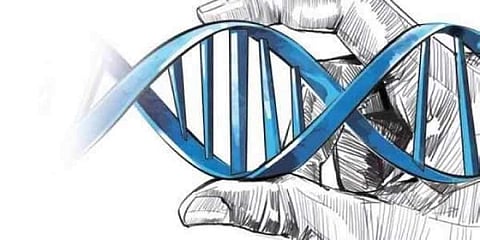

Like size or intelligence, sexual attraction isn't defined by one gene alone but is instead the result of the complex interplay between multiple regions of the genome and hard to pin environmental factors.
That's the conclusion of an analysis conducted on half a million DNA profiles as part of a giant study by researchers in Europe and the United States published in the influential journal Science on Thursday.
Its authors hope to bury the notion, popularised in the 1990s, of the existence of an all-powerful "gay gene" that determines sexuality in the way eye colour is defined.
"We found that it's effectively impossible to predict an individual's sexual behaviour from their genome," said Ben Neale, a member of MIT and Harvard's Broad Institute, one of several organisations involved in the work.
Sexual orientation does have a genetic component, say the researchers, confirming previous smaller studies, notably on twins.
But the effect is mediated by a myriad of genes.
"There is no single gay gene but rather the contribution of many small genetic effects scattered across the genome," said Neale.
Added to this are environmental factors: how a person is raised in childhood, where they live as an adult etc.
Take for example height: the genetic component is indisputable and linked to how tall your parents are or were.
But other factors like nutrition during childhood play an important part.
The same is true for how likely you are to have a heart attack.
Certain genes lead to a predisposition toward cardiac disease, but lifestyle and diet are ultimately more significant.
The new statistical analysis revealed five points in our chromosomes, called loci, which appear closely linked to sexuality, though each individual has a "very small" influence.
It also turns out that one of these markers is associated with hair loss, which suggests a link with the regulation of sexual hormones.
It's believed that these five markers could be just the beginning, with thousands more awaiting discovery in the future.
Fah Sathirapongsasuti, a scientist from the company 23andMe which contributed to the study with the profiles of customers who had volunteered to participate, added: "Genetics definitely play a part, but nonetheless, it is possibly a minority part — and there is an unexplained environmental effect that one can never put a finger on exactly.
" The bulk of the data came however from the UK Biobank, mainly white people, among individuals responding to the question: have you had sexual relations with a person of the same sex? The authors were aware of the sensitivity surrounding the subject, with two of the co-authors mentioning that they themselves were gay.
Eager to avoid being misinterpreted, they also consulted with LGBTQ groups on the best way to communicate their findings, which they have summarized on a website geneticsexbehavior.info.
The LGBTQ advocacy group GLAAD praised the work, saying it "provides even more evidence that that being gay or lesbian is a natural part of human life." Back in 1993, a genetic study on 40 families claimed to have identified the Xq28 gene as defining sexual orientation, but the new analysis refutes this.
A figure produced by the study is likely to cause confusion: the scientists wrote: "When we analyze all common genetic markers together, they capture between 8 and 25% of the individual differences in same-sex sexual behavior." But that figure is a statistical concept used by scientists when studying populations and does not apply at an individual level.
The result also challenges the notion of sexuality as a continuum, as proposed by the Kinsey Scale that describes a person's attraction on a scale from exclusively heterosexual to exclusively homosexual.
"The genetics suggest that it is an oversimplification to assume that the more someone is attracted to the same sex, the less they are attracted to the opposite sex," the authors wrote.
